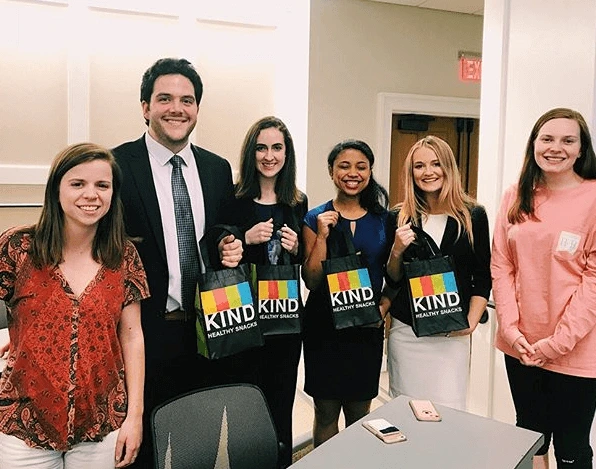Photo by Felix Mittermeier on Unsplash
Brand purpose is currently being challenged more than it has since the Sixties upheaval of cultural and political trends.
Fortune 500 companies embracing purpose-driven brand strategy were rare to find 60 years ago. Business was transactional. But, fast forward to the 2020s: A worldwide pandemic, xenophobic homicides and hate crimes, and ecological, social, and economic disruption have generated intense human emotion.
That outpouring of emotion has awoken brands to connect with customers on a deeper level than just pushing products and services. Now, customer-first companies and brands have proven to have a dramatic impact on business results. Change is happening.
Karen McFarlane, President of AMA New York and CMO of Kaye Media Partners, recently led a meaningful fireside chat, Marketing to Changing America, to understand the roles of research and purpose in marketing.
Joining Karen for this event were marketing research professionals Cheryl Stallworth, Partner and Board Member of Shedlight; Mario Xavier Carrasco, Co-Founder and Principal of ThinkNow; and AMA Board Member Craig Charney, President of Charney Research. Each spoke intently about social impact consulting, multicultural research, and further developing brand purpose through the research field.
The 1960s vs. Now
Karen kicked off the chat noting that its premise was fresh, yet familiar. “America has always been changing, and marketers and market researchers have always had to adapt to that. Is it so much different from before, or is it that so many eyes are on this moment that the change feels more energized or engrained in the culture and our future?”
“Change is happening and it’s phenomenal,” Craig exclaimed. “When I was born, America was 90% white and the following year, the world’s first satellite was put into orbit. By the 2040s, when I hopefully will be retired, I’ll be watching people walking on the surface of Mars and the majority of America will not be white. This is a big change in one lifetime.”
Cheryl agreed, stating that America is seeing more societal change now than in the 20th century, leading to different expectations of what is and isn’t acceptable. “For me, we’re on the precipice of something really exciting, but we had to go through some real pain points in order to get here,” she said. “As an optimist, I think these changes are going to be really good for us as a country.”
In reflecting on life in the ’60s compared to today, Karen pointed out that living in the present has its own distinct feel to it. “My family is from Jamaica, so their experiences were very different than here in America. You hear about that time as a part of history and stories being retold over and over again. Is the energy we have now the same as it was back then? Is social media just amplifying and accelerating this need for change? And will this affect how companies approach the next decade?”
One thing’s for sure: Thanks to technology, the rate at which society communicates has sped up, leaving an impact unseen in the past. “A lot of the things that were going on then made a lot of sense,” Cheryl commented, reminding the panel of activist movements for race and gender equality that seemed radical then but normal now. “So, it’s about speed and the fact that most people believe that the changes are positive. Although you hear about the divisions in America, we don’t celebrate the unity that exists. And there is a lot of unity.”
Craig echoed the importance of organized demonstrations in the past century, given most marginalized communities were struggling to achieve full recognition and participation in the public sphere. “Now what’s happening is that has been achieved in a formal sense, but people are actually demanding citizenship in the full political, economic, and social sense. That, along with the technical changes, are why things seem to be happening so fast.”
It’s easy to see how these movements can shift government and culture, but how do they influence business? “Something that’s fundamentally different than the ’60s is that companies understand that it does make sense from a moral and ethical standpoint to be inclusive, but it also makes business sense,” said Mario. “Diverse consumers in the U.S. are driving cultural trends. There’s a renewed interest and energy in companies getting it right.”
Change From the Inside Out
With younger generations growing up with the rights that previous generations had fought for, they are stepping into adulthood with a different mindset about what they deserve — not just from a consumer perspective, but also in the job market.
As Cheryl aptly noted, “Employees don’t leave their politics and problems at the door. We’re talking about change from the inside out, and employees are a critical part of that. They’re the front line as far as impact with your customers. If they’re happy, people can pick that up. And that can drive equity and brand loyalty.”
“Marketers are shepherds of the brand,” Karen added, “although the brand is really the responsibility of the whole organization. All the different aspects of what that brand entails from your messaging, partnerships, and sponsorships, down to your products and services. How do brands tackle this from an authentic place?”
Cheryl reflected on her time working for Colgate in Latin America. “If purpose is defined as not only what you do to make a buck but what you do beyond that to contribute to society, Colgate’s purpose around oral health reflects that,” she said. For decades, Colgate has partnered with dentists and schools to educate children on oral care and provide them with samples. Now, the company is synonymous with oral health — and toothpaste — in the region.
“That’s good business,” Cheryl acknowledged. “It’s a great example of your purpose being inextricably linked with what you are able to deliver as a brand.”
Furthering Representation in Market Research
Knowing the marketing industry wants to place a greater focus on brand purpose, it’s now a question of how market research can answer that call. Companies are reevaluating their strategies, but some feel stuck. “A lot of brands are stumped as to how they target these newer audiences,” Karen remarked. “What are marketers deficient in? Market research is the superhero in this story.”
And it may not be so much about needing more information, but how existing data can be used for higher impact. “It feels like marketers are chasing the latest trends to try to stay relevant,” Cheryl commented, “instead of using the fundamentals of what we have to drive influence. I think we have a lot more power and opportunity than what we’re demonstrating as a profession.”
However, Craig brought up that depending on the population, some customer-generated data can be difficult to quantify, understand, or even access. In these cases, “market research is not a replacement, but rather a complement to various other kinds of listening. How you listen matters.”
Mario gave the example of finding a good representation of Hispanics: A general population sample may not be as accurate as samples with different countries of origins. Fortunately, just as technology has quickened our communication, it has also widened and deepened it. “Now, there are solutions,” Craig shared. “You can use a random sampling via telephone, internet, or in person to get bigger samples.”
Another opportunity to collect a richer data set is looking toward qualitative or core specialist online panels for help. “Actually learning how to shape your marketing research to respond to the kind of individuals and communities you’re trying to reach out to is increasingly important,” Craig emphasized. Whether you’re basing your product research on geography or ethnicity, Pew Research Center offers research that can help ensure your sample is matching up to the right audience, Mario added. “Getting into identity and how a person identifies, I feel like most marketers aren’t even there yet.”
So, what is the future of marketing? Watch the Marketing to Changing America: Understanding the Roles of Research and Purpose on our YouTube channel. You’ll see deeper discussions about cultural context, self identity, intersectionality, inclusive thinking, and authentically transforming brand purpose by changing from the inside out.

Wendy Weatherford-Marks is an AMA New York Board Member and founder of Kosmic Marketing, Inc. She previously worked at global media brands: DreamWorks Pictures, Viacom, NBCUniversal, AMC Networks, and Clear Channel Outdoor. You can connect with Wendy on LinkedIn.
















